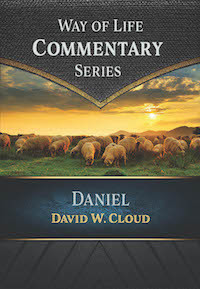Daniel (Commentary Series)
Daniel (Commentary Series)
Daniel’s prophecies give an overview of God’s program for Israel from Daniel’s day until the second coming of Christ.
Daniel is one of the fundamental keys to understanding New Testament prophecies (such as Matthew 24, 2 Thessalonians 2, and Revelation). Christ referred to Daniel in His great prophecy of Matthew 24 (verse 15). “Our Lord refers to Daniel in His great prophetic Olivet Discourse. Hence that discourse can only be correctly understood in the light of the Book of Daniel. The last Book of the Bible, the Book of Revelation ... would ever be a sealed Book, if we had not the prophecies of Daniel, and the prophecies of Daniel would in part remain sealed if we had not Revelation” (Arno Gaebelein, Daniel).
Daniel’s prophecies are the key to understanding human history over the past 2,500 years and particularly the end times.
Daniel 2 teaches us that the Roman Empire holds a central role in the events of the end times. The empire is depicted by the legs of iron, but it continues until the time of the Antichrist in the form of the feet and toes of part iron/part clay. The Roman Empire united Europe and created the European culture that exists today. The Antichrist will rise out of western Europe. He is the “prince” of the people who destroyed Jerusalem in AD 70 (Da. 9:26).
Commentary Series
This series is designed in a unique format to be used as verse-by-verse commentaries, as teaching courses, and for expository preaching. The commentaries are thorough, serious, broad, insightful, and practical, with an emphasis on application to the Christian life and ministry. Context is honored; words are defined; figures of speech are explained; difficulties are tackled. The commentaries are backed by 45 years of intense Bible study and are packed with historical backgrounds and archaeological studies based on the author’s personal research, which is reflected in books such as the Way of Life Encyclopedia of the Bible & Christianity, Bible Times & Ancient Kingdoms and Jews in Fighter Jets: Israel Past, Present, and Future. The interpretation is from a literal, dispensational perspective. The basis is the King James Bible and its underlying original language texts. The King James Bible is explained and illuminated but not criticized. The church is given priority as the pillar and ground of the truth and the headquarters for world evangelism. There is no hint of modernism or influence from compromised evangelicalism. The user will find no reference to or dependence upon men such as Origen, Jerome, Augustine, C.S. Lewis, Eberhard Nestle, or Bruce Metzger. For examples of the format and methodology of the commentary series, see the online samples from Isaiah 35 and 53; Jeremiah 23; and Daniel 2.
